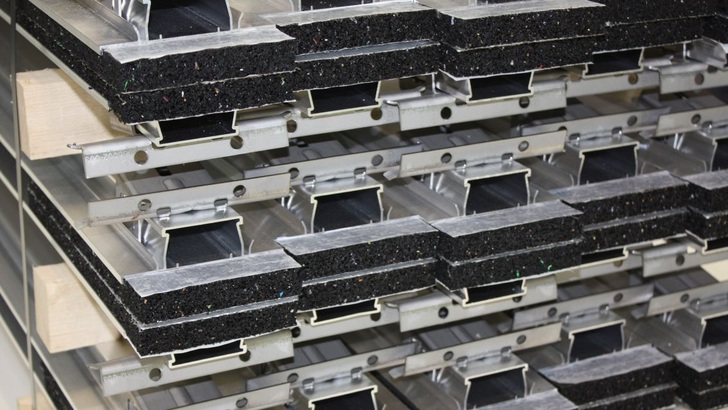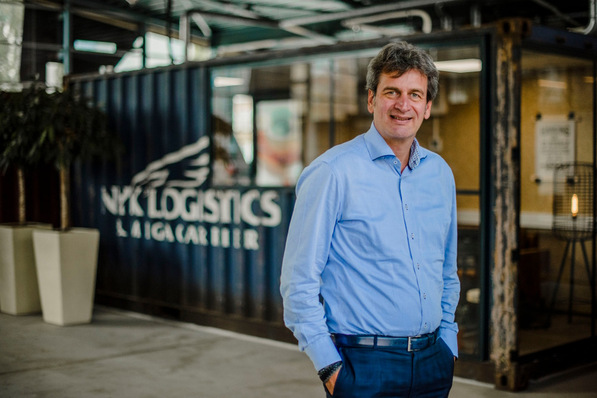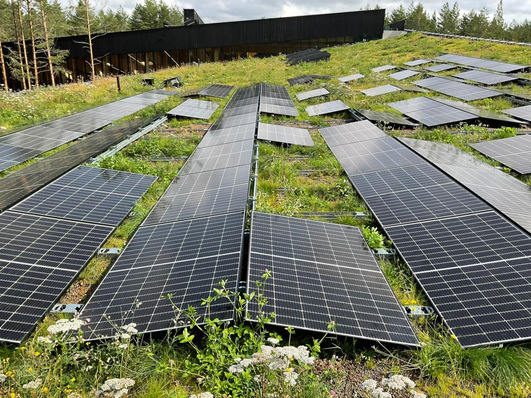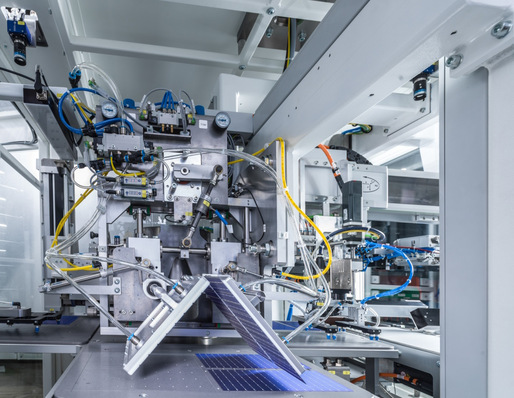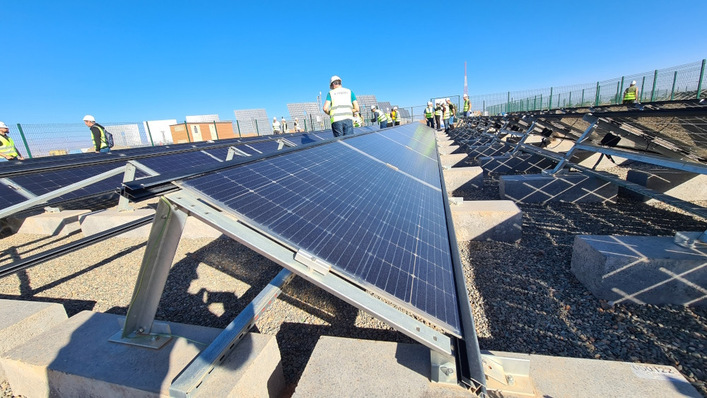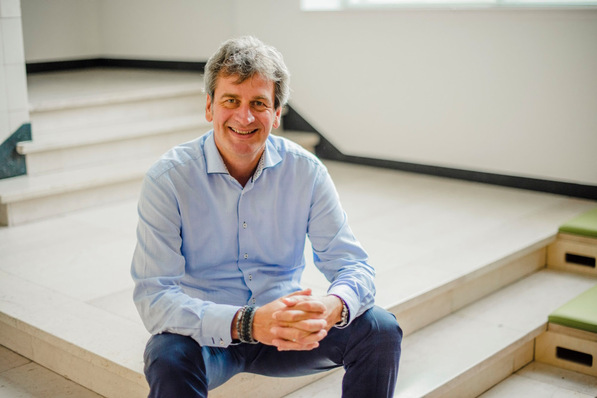Some basics up front: 127 manufacturers of mounting systems were presenting at the Intersolar Europe in Munich, of which 42 make tracking systems. There was a lot to choose from, and making the right choice for the requirements of their customers proved to be a challenge to installing companies and project planners. The Guided Tours PV provided an overview and helped installing companies to find the appropriate partner in mounting technology.
During the Guided Tours PV, participants were shown very many interesting new products. Although, sometimes even the experts needed to look closely because the differences between manufacturers can be very subtle.
It is often taken for granted these days that mounting systems just work, have the necessary certification and are quick and easy to assemble. But project planners and installing companies do well to scrutinise, because far from all manufacturers active in the market have passed all of the required tests or have planning permission for their substructures.
30 years in salty water
Germany’s first greenfield installation was set up on the North Sea island of Pellworm in 1986. Over the years the older panels have been replaced by higher-performing ones, the inverters were inspected and serviced on a regular basis, same as the mounting systems.
After 20 years it became clear that the mounting systems were the greatest weakness of the generators. From the three materials tested on Pellworm, teak wood proved to be most resilient, followed by aluminium and galvanised steel. The salty air had no effect on the wood and the aluminium, but the galvanised steel construction had to be replaced after 30 years: The North Sea climate had taken such a toll on the steel that it became structurally unsound.
This experience confirms what should be obvious: the mounting systems are the foundation of every solar power plant. They determine if an installation can run for 20 or 30 years, or whether it needs to be refurbished at great expense. The test installation on Pellworm has demonstrated that in a salty climate, aluminium is the better choice over steel. With proper maintenance, PV installations can operate efficiently for 30 years – and even 40 years or more with a mounting system designed for long-term use.
This year’s Guided Tours PV in Munich seemed to suggest that there was not that much difference between the products companies were presenting. They tended not to highlight the unique selling points specific to their mounting systems. As the participants in the tours were often experts in their own right, they would have wanted to be shown both technical details, but also be provided with information on soft factors such as the customer-oriented business strategy or sustainable management concepts. For the experts at the stand to convey such information in an understandable and believable manner, turned out to be a great boon for the presenting company. For example, an installing company from Sweden decided in favour of K2 Systems, because expert Willem Haag was able to give a credible account of the company’s philosophy: “We make it simple. For you.”
Baywa r.e.: huge product range of the wholesaler
Thomas Pfaff of Baywa r.e. outlined the huge product range of this specialist wholesaler. This was almost too much for many of the participants. They felt almost overwhelmed by this abundance. Then again: Baywa r.e. does offer a wide range of products, and globally at that.
When it comes to mounting systems, installing companies and technicians can choose from a variety of versions and components. The way online shops are designed also helps companies and their customers to reorganise what is on offer and reduce the catalogue of products to a manageable size. Baywa r.e. complements the mounting systems with all supplies as well as the necessary wiring for solar panels.
Baywa r.e.’s star attraction is the mounting system Novotegra. Because it requires few materials and has preconfigured components, it is very simply and quick to assemble. The system can be adapted to any circumstances – be it pitched or flat roofs, facades or specialised solutions. The Novotegra roof hooks – either made of one piece or adjustable in three ways – are robust.
The use of aluminium and stainless steel makes the system long-lasting and resistant to corrosion. Baywa r.e. has a number of certificates that confirm this: from the TÜV Rhineland as well as a CE label and a general construction inspection certificates. Furthermore, Baywa r.e. grants a product warranty of ten years. Planning is done through the online planning tool Solar Planit and new customers are provided with free first-time assembly.
New range of clamps by Schletter
In Munich, Schletter presented their new range of panel clamps for pitched roofs called Rapid 16 with a handful of different models that can take care of nearly all eventualities. Because the claws can be rotated and the distance between clamps adjusted, panels of any size and frames of any thickness can be mounted. Instead of having to stock 190 varieties of clamp as usual, now five will suffice. This makes both retail and warehousing easier.
For flat roof installations, Schletter presented both the Alugrid system and the Alugrid 100 as a construction kit. The system is most useful for flat roof systems in an east-west orientation. As a result of aerodynamic optimisation, only little ballast is required, which is structurally verified on a case-to-case basis. The Alugrid 100 sets with their pre-configured panel cushioning as well as pre-adhered building protection matts and with the appropriate accessories allow the realisation of one to three rows of double panels.
PMT presented construction inspection certificates
At the third point of contact, PMT showcased themselves as a specialist in penetration-free mounting systems and along with their car port and east-west system, they presented a non-penetrating mounting system for gabled roofs.
PMT has obtained a construction inspection certificate for their flat roof system Evolution – for the entire system rather than just the individual components. The awarding of the certificate by the German Institute for Structural Engineering (DIBt) was preceded by extensive simulations and tests.
This is genuinely a unique selling point which should provide a great advantage in this highly competitive market for flat roof mounting. “The DIBt’s procedures are very thorough and long,” Peter Grass, CEO of PMT, explains. “The first contact was in 2015. But it seemed to be the right thing to do to try and obtain that certificate. We put a lot of money into testing and trial-running our systems.”
PMT were particularly interested in understanding how forces acted on aerodynamic flat roof systems, how the wind affected them and how its force is transferred through the panel array and into the roof itself. “We have to understand how individual components behave under normal conditions and over long periods, how compound materials work together and how the full-scale system behaves overall under load,” Grass said. “We wanted to build a system that lives up to the highest expectations of quality and stability.”
High quality by Ernst Schweizer
As their unique selling point, the Ernst Schweizer AG presented their prize-winning in-roof mounting system Solrif which was impressive for its simple technology and over 700 megawatts of built capacity. Ernst Schweizer focusses on Swiss precision and quality. For instance, for the roof-mounted system, depending on the roofing material, the sinkage depth can be calculated over a period of ten year to within two percent.
Furthermore, Ernst Schweizer presented their aerodynamic flat roof system MSP-FR-EW and S, which can do with very little ballast. To measure the application of force to the roof construction, Schweizer offers a software called Pro MSP. The system is composed of just a few parts that are easy to handle. There is no need for cutting on the roof itself, which avoids contamination of the sensitive roof cladding with saw dust and also saves time. The entire system requires only one tool (a 30 Torx bit) to assemble. It can even out bumps of up to 2.5 degrees.
K2 streamline their systems
Visitors of the Intersolar in Munich were convinced by K2 Systems’ motto: “We make it simple. For you.” Practical help tools such as the Base On and the new K2 app as well as new products such as the universal clamp or the new roof hooks have helped them to further streamline the mounting technology. The universal clamp One Mid will make mounting significantly simpler, because this clamp is compatible with seven lines of railing, among others with Single Rail, Speed Rail and the Dome systems. “Dimensioning becomes easier and we can do without 16 of the usual clamps,” Marcel Grilo of K2 Systems said.
But not only the universal clamp demonstrates the modular concept that K2 Systems is pursuing. The new roof hook Single Hook FT, suitable for mounting regardless of rafters, or the new Single Hook Vario can both be fitted directly to the tried and tested Single Rail. The Mini Rail system for trapezoidal metal roofs has also been optimised recently. The new Mini Clamp, which is suitable for panels with 30 to 50 millimetres frames, and the Mini Five that allows five additional degrees of inclination, the system provides a reliable mounting system that can be assembled in just a few steps.
T-Werk covers all types of roof
Last but not least: T-Werk, a newly emerged manufacturer from Ellzsee between Munich and Ulm presented themselves as a provider of individual solutions that adapt to the customer’s needs. Their click system Chronos is suitable for any form of pitched roof: tiles, corrugated eternit, folded seam or beaver tail. The Chronos trapezoidal system was designed specifically for trapezoidal metal roofs. It works for all common ledge spacing. Furthermore, T-Werk also offer their flat roof system Triton, which allows mounting commercial solar generators without the use of tools and without penetrating the roof. The system is ballasted and made of galvanised steel. (Manfred Gorgus)
Stay informed, get our free newsletter twice a week, register here
More useful information:
http://www.pveurope.eu/News/Markets-Money/Strong-solar-and-renewable-energy-growth-in-Ukraine
http://www.pveurope.eu/News/Markets-Money/Ukraine-stimulates-investments-of-European-solar-companies

